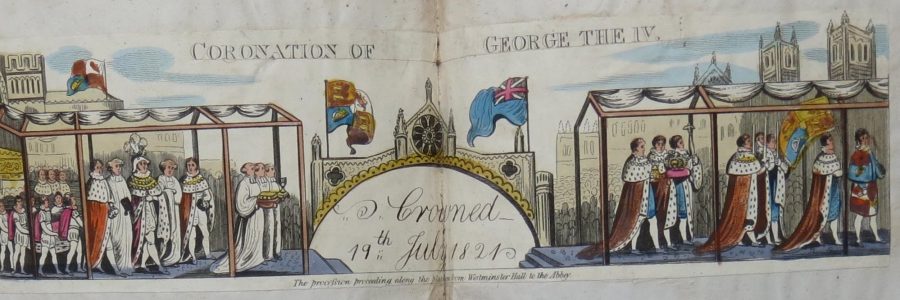
Scrapbooking in Cork
The Library has recently acquired two large folio scrapbooks of 436 and 360 pages, compiled between 1818 and 1822 by one E. Madder of Cork. The books contain a large quantity of cut-outs from local newspapers, together with ephemeral material such as trade cards, advertisements, engravings, occasional verses and slip songs, and a few small original watercolours. The title page to volume 1 is compiled from words cut from newspapers, etc., to read “Olio, or Scrap Book. A miscellaneous collection of Biography, Literature, Anecdotes, Poetry & Embellished with a Great Variety of Engravings”; that to part 2 is largely printed, with the imprint “Printed at the Limerick Advertiser office, by A. Mac Donnell”. The date “1822” is pasted to the title page of volume 2; volume 1 is undated.
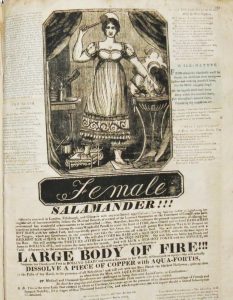 The bulk of the collection consists of clippings from newspapers, doubtless preserving a great deal of material from the Irish provincial press. The names of Lord Byron and Napoleon Bonaparte, celebrities and/or villains of the day, appear frequently, and material relating to British royalty suggest the political sympathies of the compiler. Alongside this, the volumes preserve a great deal of Irish provincial jobbing printing of the period, throwing an interesting light on the cultural and commercial life of Cork and Limerick. Items that caught the compiler’s eye include advertisements for travelling shows of various kinds (titles such as “Performing dogs!!!”, “Female Salamander!!!”) and cards for local tradesmen and practical inventions such as “Whiteley’s patent self-acting kitchen range”. A reference to the “Ascent of Mr. Sadler, from the square of Richmond Barracks” relates to a display by the first English balloonist, James Sadler. There are a number of satirical and humorous engravings, such as Samuel Collings’s Death too many for the Doctor (1789), Isaac Cruikshank’s Church promotion, or how to scale a pulpit (1808), one of his engravings satirising the relationship between Prince Frederick and Mary Anne Clarke, and the anonymous The coalition, on the North-Fox coalition of 1783.
The bulk of the collection consists of clippings from newspapers, doubtless preserving a great deal of material from the Irish provincial press. The names of Lord Byron and Napoleon Bonaparte, celebrities and/or villains of the day, appear frequently, and material relating to British royalty suggest the political sympathies of the compiler. Alongside this, the volumes preserve a great deal of Irish provincial jobbing printing of the period, throwing an interesting light on the cultural and commercial life of Cork and Limerick. Items that caught the compiler’s eye include advertisements for travelling shows of various kinds (titles such as “Performing dogs!!!”, “Female Salamander!!!”) and cards for local tradesmen and practical inventions such as “Whiteley’s patent self-acting kitchen range”. A reference to the “Ascent of Mr. Sadler, from the square of Richmond Barracks” relates to a display by the first English balloonist, James Sadler. There are a number of satirical and humorous engravings, such as Samuel Collings’s Death too many for the Doctor (1789), Isaac Cruikshank’s Church promotion, or how to scale a pulpit (1808), one of his engravings satirising the relationship between Prince Frederick and Mary Anne Clarke, and the anonymous The coalition, on the North-Fox coalition of 1783.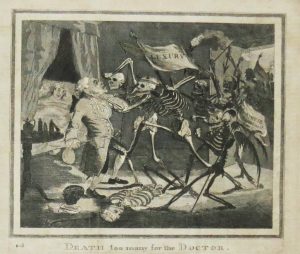 A number of pieces satirise events closer to home for the compiler. There are a number of broadsides apparently relating to Irish elections, including two in the form of despatches to the Admiralty Office and an “Extract of a letter from Lieut. England”, and an “Address of freedom to the electors of Cork”, a verse encomium to Christopher Hely-Hutchinson. The engraving The city in an uproar- or The re-taking of Umbrage- by Sir Tony Candlestick Knt satirises the Irish Volunteers of Dublin.
A number of pieces satirise events closer to home for the compiler. There are a number of broadsides apparently relating to Irish elections, including two in the form of despatches to the Admiralty Office and an “Extract of a letter from Lieut. England”, and an “Address of freedom to the electors of Cork”, a verse encomium to Christopher Hely-Hutchinson. The engraving The city in an uproar- or The re-taking of Umbrage- by Sir Tony Candlestick Knt satirises the Irish Volunteers of Dublin.
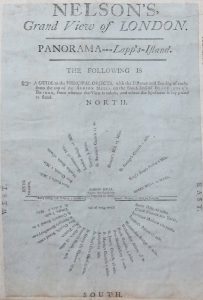 The term “scrap book” is first recorded in its modern sense in 1825, and a number of publications with that title in the 1820s, chiefly with Dublin or Edinburgh imprints, suggests that the practice of compiling scrapbooks was well established by that period. It may have evolved as an attempt to bring order to the steadily-increasing volume of printed material in the period, the result in part of the growing number and popularity of newspapers. The scrapbook has an obvious antecedent in the “commonplace book”, a manuscript miscellany in which the compilers transcribed noteworthy passages from their reading, along with other material (see the examples digitised by the Scriptorium project). Modern studies of the practice, such as Ellen Garvy’s Writing with Scissors: American Scrapbooks from the Civil War to the Harlem Renaissance (OUP, 2012), Jessica Helfand’s Scrapbooks: An American History (Yale UP, 2008) and the edited collection The Scrapbook in American Life (Temple UP, 2006), have largely focused on America in a slightly later period, where Mark Twain and Frederick Douglass, among others, were enthusiastic compilers of scrapbooks. It seems plausible that this interest could spread to other parts of the world, and Ireland might be a fertile ground for similar work.
The term “scrap book” is first recorded in its modern sense in 1825, and a number of publications with that title in the 1820s, chiefly with Dublin or Edinburgh imprints, suggests that the practice of compiling scrapbooks was well established by that period. It may have evolved as an attempt to bring order to the steadily-increasing volume of printed material in the period, the result in part of the growing number and popularity of newspapers. The scrapbook has an obvious antecedent in the “commonplace book”, a manuscript miscellany in which the compilers transcribed noteworthy passages from their reading, along with other material (see the examples digitised by the Scriptorium project). Modern studies of the practice, such as Ellen Garvy’s Writing with Scissors: American Scrapbooks from the Civil War to the Harlem Renaissance (OUP, 2012), Jessica Helfand’s Scrapbooks: An American History (Yale UP, 2008) and the edited collection The Scrapbook in American Life (Temple UP, 2006), have largely focused on America in a slightly later period, where Mark Twain and Frederick Douglass, among others, were enthusiastic compilers of scrapbooks. It seems plausible that this interest could spread to other parts of the world, and Ireland might be a fertile ground for similar work.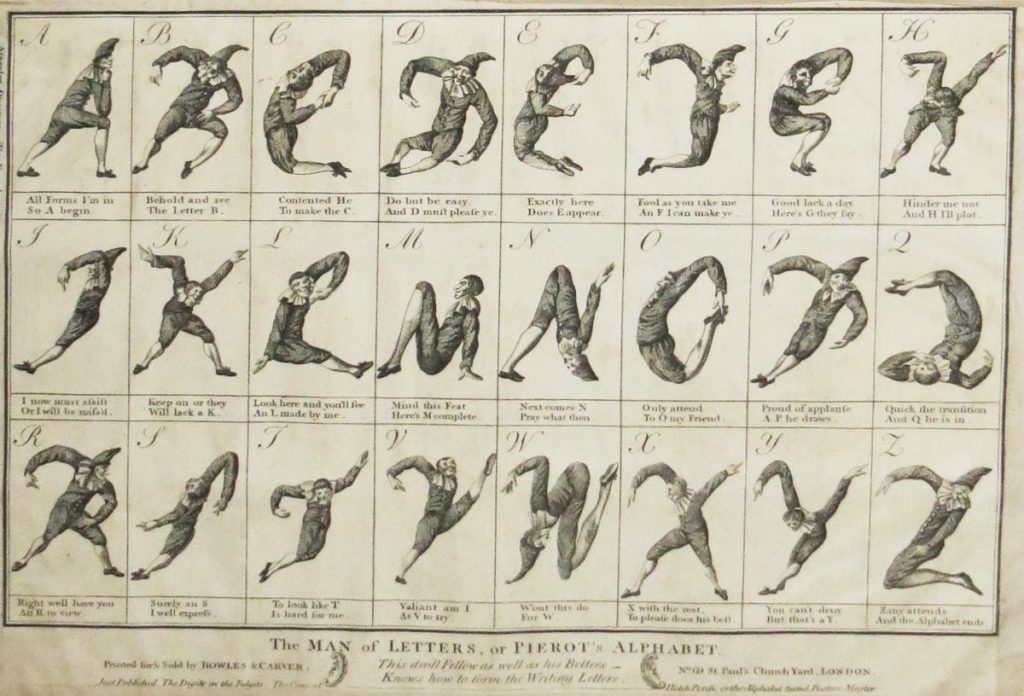
After conservation work, the scrapbooks will join the Bradshaw collection, often described as the finest collection of Irish books outside Ireland. Recent collecting in this area has focused on the nineteenth century; the Rare Books and Early Manuscripts Department is also looking to develop its holdings in English and Irish provincial printing generally.
